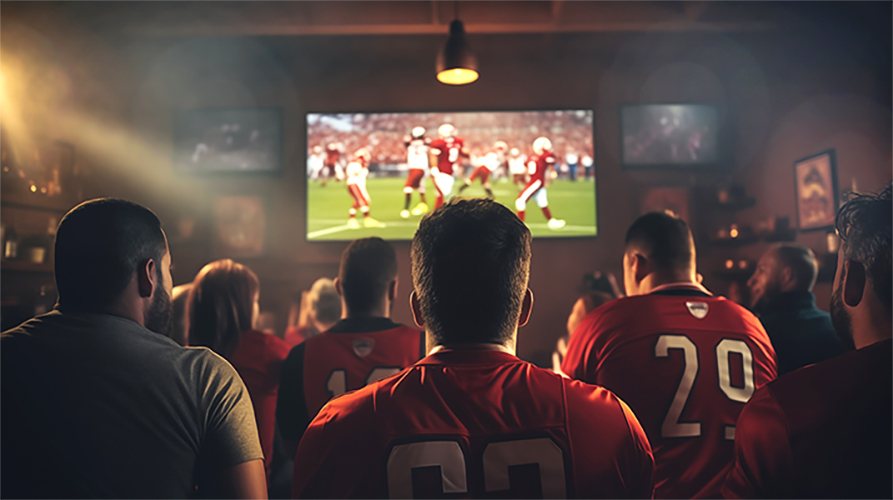Measurement of the Out of Home TV Audience has Become a Must Have

A long time ago when I joined the media research community, I began a habit of memorizing numbers I believed could become important benchmarks. Ed Papazian was possibly responsible for this. He and I shared a Fire Island house one summer with Marvin Antonowsky, then leading media research at JWT, and Ed heading up media research at BBDO. Ed has an eidetic memory for important media research numbers, and I probably emulated him in that.
Two numbers stick in my mind from those early years as regards out of home TV viewing: 3% and 8%. 3% was the out of home viewing average across all programs way back then. 8% was the high water mark for the biggest sports events of the year, in terms of out of home viewing.
In this context, “out of home” does not necessarily mean “outdoors”, but rather it means "watching TV somewhere other than in your own home”. Nowadays that mostly includes other people’s homes, airports, gyms, bars, and cars, although today TV can be watched on many devices, which also expands the phenomenon of out of home viewing, to anywhere a person might be.
With all of the other media changes going on right now, it shouldn’t be surprising to realize that out of home viewing has grown enormously.
Still, I was impressed to see that Nielsen measured that more than 41% of the live audience for the Washington-Dallas NFL game on Thanksgiving watched the game away from home. The out of home viewership for that game was 16.7 million persons 2+ in the U.S.
This year’s Superbowl broke all Superbowl Nielsen records, with 202.4 million people 2+ viewing for at least 6 minutes, 123.7 million viewing in the average minute, and 26 million watching out of home. The highest estimates we have seen of the audience to the 1969 Moon landing carried by the Big 3 networks were only 150 million people 2+. Of course the number of U.S. TV households in 1969 was only 58,250,000, and today that stands at 125 million.
It’s no secret that live sports programming, which was always important to advertisers and viewers, is becoming more important to television every year, as streaming gradually becomes the dominant viewing modality. In streaming, viewers have a lower tolerance for the number of ads per hour, probably because the same streaming networks charge more to be able to watch with fewer or no ads.
Millions have already cut their one cable/satellite subscription and signed up for multiple subscriptions to streaming services. And now that streaming services have begun to license major sports events exclusively – Amazon Prime Video’s NFL Thursday Night Football, Apple TV+ 10-year deal for MLS games, Peacock’s NFL Wild Card Kansas City Chiefs vs. Miami Dolphins game for example – fans have assembled in the homes of friends and relatives who have the right streaming subscription. Hence the dramatic rise in out of home viewing. Where the high water mark a long time ago was 8%, right now it’s over 41%, and could continue to rise, driven by exclusive lockups of prized TV events by streaming services.
We have always been social animals and so it has always been fun to watch TV together. Now the economics also favor sociability.
The out of home viewing rise also affects other programs. Nielsen reports that the finale of RuPaul’s Drag Race out of home audience was 15.5% of the total audience (April 14, 2023) and the premiere of Next Level Chef was 14.5% of its total audience (January 12, 2023).
Nielsen measures the out of home audience with its proprietary PPM wearable technology, and this year is expanding the coverage of that methodology from 65% to 100% of the country. You’ll recall that I’m consulting for Nielsen, and you might remember I have a special place in my heart for PPM, which is destined to replace pushbutton peoplemeters later in this decade. My special fondness for PPM is explained in this article in case you missed it.
The thing about PPM is that it’s passive. Now that Nielsen has made it wearable, you just put it on and forget it, but it is always measuring your TV and radio/internet audio usage. I don’t know who started using the term “massive passive” first, me or Bill Livek. Still, it was always obvious to both of us that media were going to continue to multiply and therefore fragment. Hence, audience measurement would have to have massive sample sizes, and for accuracy, it would have to gravitate to entirely passive, without any effort by the viewer.
This was a dream when Ed and I used to prophesy among the sand dunes, and the vision we were imagining has materialized into today’s reality.
Posted at MediaVillage through the Thought Leadership self-publishing platform.
Click the social buttons to share this story with colleagues and friends.
The opinions expressed here are the author's views and do not necessarily represent the views of MediaVillage.org/MyersBizNet.


